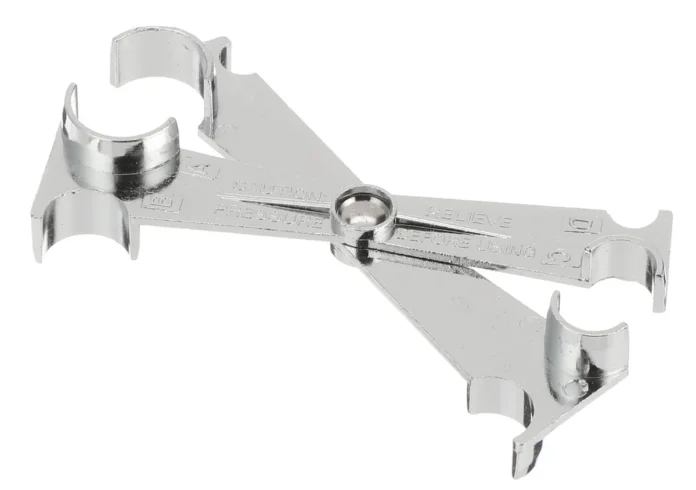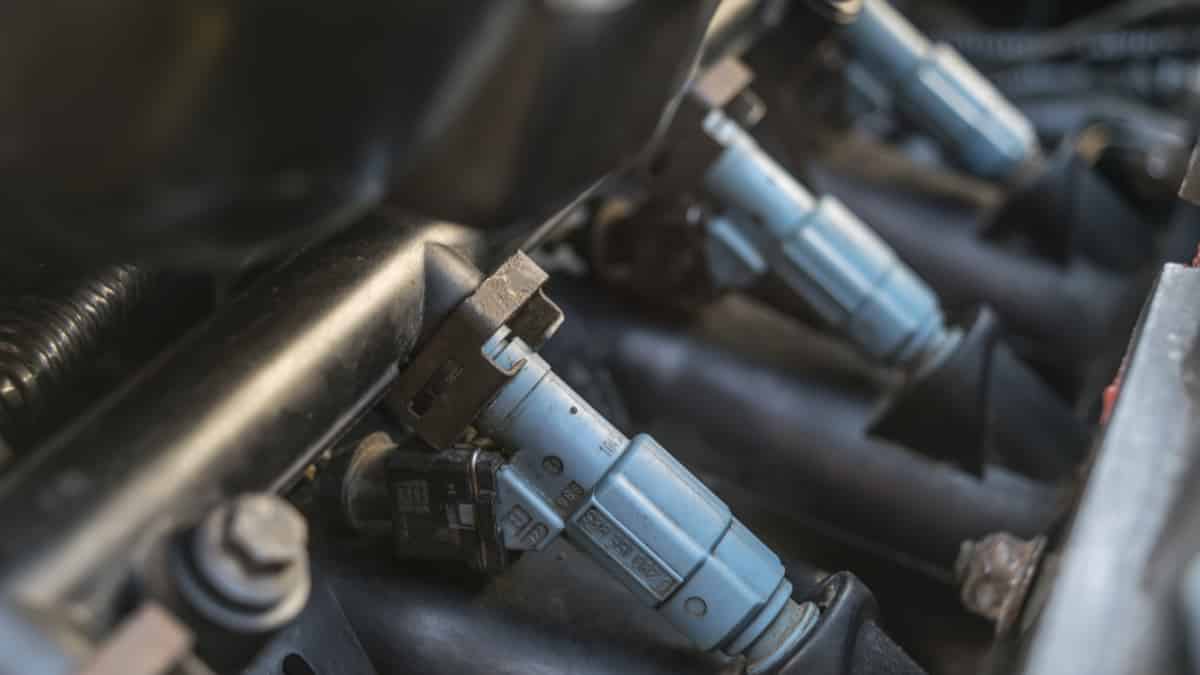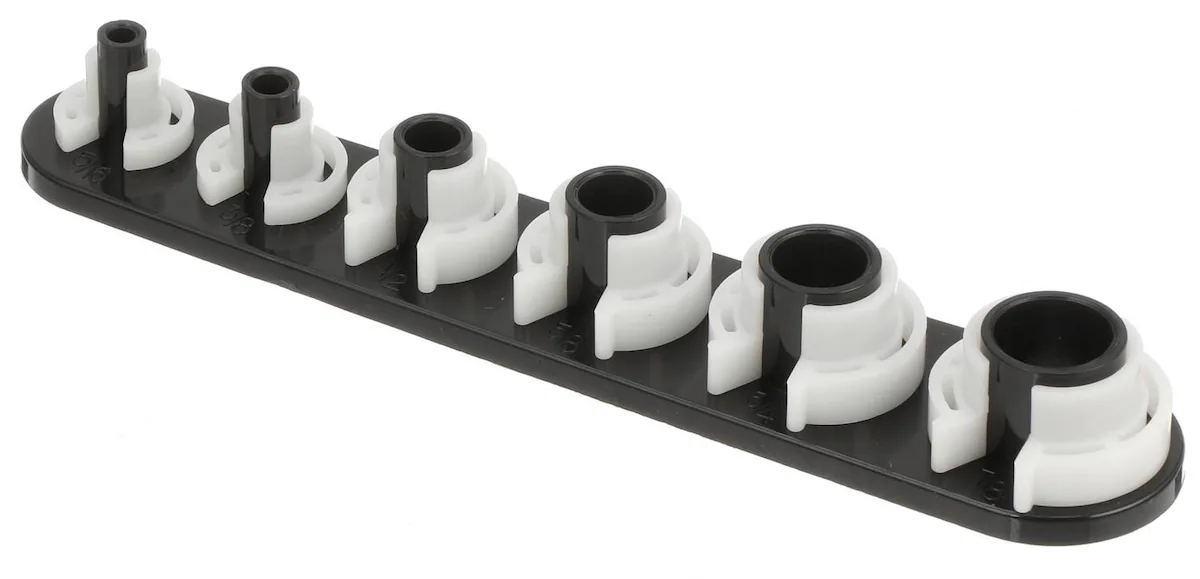
The fuel line disconnect tool, often underestimated in the realm of automotive repair, serves an indispensable role in the safe and efficient disconnection of fuel lines. Despite its unassuming appearance, this specialized instrument simplifies the otherwise tricky task of detaching fuel lines from their connectors.
Whether you’re a seasoned mechanic or a dedicated DIY enthusiast, understanding the intricacies of this tool is vital. This guide provides a lowdown on what a fuel line disconnect tool truly is, some of its practical applications, the benefits of and tips for using one, as well as advice for selecting the right one for your needs.
What is a Fuel Line Disconnect Tool?
A fuel line disconnect tool, also known as a quick disconnect tool, is a specialized instrument designed to safely and efficiently disconnect fuel lines from their connections. Its unique design allows users to release the retaining clips or springs that secure fuel lines in place without damaging the lines or the connectors. This tool comes in various sizes to accommodate different types of fuel lines, making it a versatile addition to any mechanic’s toolbox.
How is a Fuel Line Disconnect Tool Used?
While utilizing a modern fuel line disconnect tool may appear straightforward, precision and caution are paramount to prevent damage or fuel leaks. Begin by identifying the specific fuel line requiring disconnection, typically linked to components like fuel filters, fuel pumps, or fuel injectors. Then, select the appropriate fuel line disconnect tool size that corresponds with the diameter of the fuel line.
Gently insert the tool into the space between the fuel line and the connector. You should encounter resistance from the retaining clip or spring. Simultaneously, press the tool firmly against the retaining clip or spring while drawing the fuel line toward you. This action will trigger the release of the clip’s grip on the line.
With the clip effectively disengaged, carefully pull the fuel line away from the connector. It’s wise to anticipate a minor fuel spillage, so be prepared with a container or rag to capture any drips. Complete the required repair or maintenance task, then reattach the fuel line by pushing it back onto the connector until you hear a distinct click that indicates reattachment.
Benefits of Using a Fuel Line Disconnect Tool
A fuel line disconnect tool offers many advantages, making it an indispensable component in automotive repair. Safety is the prime benefit, as disconnecting fuel lines without the appropriate tool can prove hazardous, potentially leading to fuel leaks or damage. Efficiency is key, too, with the tool significantly streamlining the disconnection process, economizing both time and effort when compared to alternative methods like pliers or screwdrivers.
Damage prevention is another critical advantage, as fuel lines and connectors are susceptible to harm when subjected to improper disconnection techniques. The tool’s design minimizes the risk of causing any harm during the disconnection process. Reusability is a key consideration, too. A high-quality fuel line disconnect tool can be used repeatedly, making it a cost-effective investment for professional mechanics and dedicated DIY enthusiasts.
Tips for Using a Fuel Line Disconnect Tool
To maximize the utility and safety of a fuel line disconnect tool, heed some top tips. For example, prioritize safety by donning appropriate personal protective equipment (PPE), including gloves and safety goggles, to guard against potential fuel exposure during the disconnection process. Also, develop a comprehensive understanding of your vehicle’s fuel system and the precise location of fuel lines for correct identification before commencing disconnection.
Operate within a well-ventilated area, distant from open flames, sparks, or potential ignition sources, as fuel vapors hold flammable properties. Be prepared with a container or absorbent material to swiftly and effectively capture any spilled fuel during the disconnection process.
Select the correct tool size in alignment with the specific fuel line being worked on. Utilizing an inadequately sized tool may result in unintended damage or a less secure disconnection. For those fortunate enough to possess a service manual for their vehicle or access to the manufacturer’s instructions, consulting these resources helps ensure the correct utilization of the disconnect tool.
Tips for Buying a Fuel Line Disconnect Tool
When buying a fuel line disconnect tool, consider some crucial factors in making an informed and well-suited selection. For example, begin by verifying compatibility, ensuring the tool aligns with the types and sizes of fuel lines typically encountered in your vehicle or range of vehicles. Place a premium on quality, too, investing in a tool fashioned from durable materials capable of withstanding the rigors of repeated usage without succumbing to wear and tear.
Research the reputation of the brand, conducting research and reading user reviews to gauge the tool’s performance and reliability. Set a budget to stay within, too, and examine whether the tool is accompanied by a warranty or guarantee, offering recourse in case of defects or operational issues.
Common Applications of a Fuel Line Disconnect Tool
A Fuel Line Disconnect Tool finds essential use in various automotive scenarios. It is indispensable when dealing with components such as fuel filters, fuel pumps, and fuel injectors. Mechanics and DIY enthusiasts rely on it to simplify disconnection tasks efficiently and safely. Its versatility makes it a must-have tool in any automotive toolbox, ensuring hassle-free maintenance and repairs.
Safety Precautions When Using a Fuel Line Disconnect Tool
Using a Fuel Line Disconnect Tool requires strict adherence to safety measures. Before commencing work, it’s crucial to turn off the vehicle’s engine and release fuel pressure to prevent accidents. Additionally, wearing appropriate personal protective equipment (PPE) such as gloves and safety goggles safeguards against fuel exposure.
Troubleshooting Tips for Using a Fuel Line Disconnect Tool

While a Fuel Line Disconnect Tool simplifies disconnections, challenges may arise when dealing with stubborn clips or connectors. In such cases, patience and precision are key. Applying a gentle, steady force while using the tool can help overcome resistance. Ensure that the tool is correctly sized for the specific fuel line, and double-check the positioning to avoid damage or leaks.
Environmental Considerations When Handling Fuel
Proper environmental considerations are essential when working with fuel and a Fuel Line Disconnect Tool. Spilled fuel should be promptly and responsibly managed. Have a container or absorbent material on hand to capture any fuel drips, preventing contamination of the environment.
End Note
Despite its unobtrusive appearance, the fuel line disconnect tool is a vital instrument in ensuring the safe and efficient disconnection of fuel lines during automotive repair and maintenance tasks. Whether you’re a seasoned mechanic or an enthusiastic DIYer, this tool represents an indispensable addition to your automotive toolkit.


















